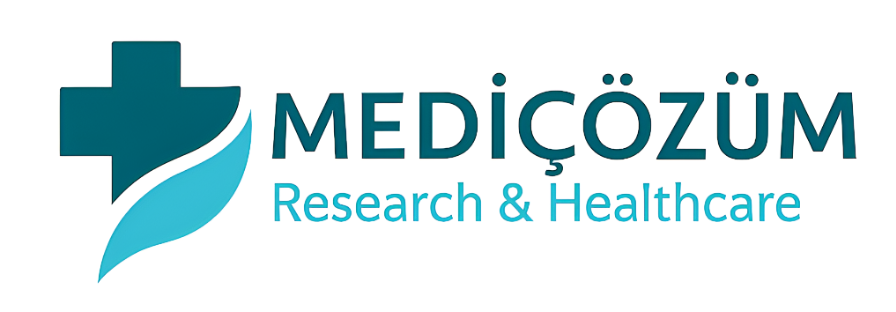Prognostic Value of Aortic Pulse Wave Velocity as Index of Arterial Stiffness in the General Population
DOI:
https://doi.org/10.21276/mp8eyr78Keywords:
Arterial stiffness, Pulse pressure, cardiovascular diseases, Risk factorsAbstract
Background: During a person’s lifetime, as part of the aging process or as a consequence of hypertension, atherosclerosis, or other pathological processes, the aorta stiffens. Accordingly, the forward pulse wave travels faster, and the arterial waves reflected from the periphery reach the heart early during systole, which leads to higher systolic but lower diastolic blood pressure, an augmentation of the cardiac workload, and a decrease of the coronary perfusion pressure. The aortic pulse wave velocity (APWV) reflects central arterial stiffness. Some studies addressed the prognostic significance of APWV above and beyond other cardiovascular risk factors. Furthermore, pulse pressure, an indirect measure of increased arterial stiffness, predicts a poor prognosis in treated and untreated hypertensive subjects.
Methods: The study was conducted on a sex- and age-stratified random sample of 167 rural and suburban population of Haryana state aged 40 to 70 years. Results: Cox regression analysis was used to investigate the prognostic value of APWV, pulse pressure (PP) and other covariates. We adjusted for sex, age, body mass index. MAP measured in the office (conventional PP) and APWV by Periscope TM. With these adjustments, APWV maintained its prognostic significance in relation to each end point (P<0.05), whereas office PP lost their predictive value (P>0.19). In sensitivity analyses, APWV still predicted all cardiovascular events after standardization to a heart rate of 60 beats per minute, after adjustment for MAP. Conclusions: In a general population of Haryana, APWV predicted a composite of cardiovascular outcomes above and beyond traditional cardiovascular risk factors.
Downloads
References
Efficacy of aliskiren and valsartan in hypertensive patients with albuminuria: a randomized parallel-group study Journal of Renin-Angiotensin-Aldosterone System. 2013;14:315-321
Prognostic Impact of Aortic Stiffness in High-Risk Type 2 Diabetic Patients: The Rio de Janeiro Type 2 Diabetes Cohort Study Diabetes Care. 2013;36:3772-3778
Longitudinal Trajectories of Arterial Stiffness and the Role of Blood Pressure: The Baltimore Longitudinal Study of Aging Hypertension. 2013;62:934-941.
Local Arterial Stiffening Assessed by MRI Precedes Atherosclerotic Plaque Formation Circ Cardiovasc Imaging. 2013;6:916-923
Self-reported time spent watching television is associated with arterial stiffness in young adults: the Amsterdam Growth and Health Longitudinal Study Br. J. Sports. Med.. 2013;0:bjsports-2013-092555v1-bjsports-2013-092555,
Relation of Epicardial Adipose Tissue With Arterial Compliance and Stiffness in Patients With Hypertension ANGIOLOGY. 2013;0:0003319713502120v1-3319713502120,
Relations of arterial stiffness and endothelial function to brain aging in the community Neurology. 2013;81:984-99.
Polymerase Delta Interacting Protein 2 Sustains Vascular Structure and Function Arterioscler. Thromb. Vasc. Bio.. 2013;33:2154-2161.
Body Fat Is Associated With Reduced Aortic Stiffness Until Middle Age Hypertension. 2013;61:1322-1327.
Outcome Associations of Carotid-Femoral Pulse Wave Velocity Vary With Different Measurement Methods Am J Hypertens. 2012;25:1264-1270
Relationship Between Short-Term Blood Pressure Variability and Large-Artery Stiffness in Human Hypertension: Findings From 2 Large Databases Hypertension. 2012;60:369-377.
Chronic obstructive pulmonary disease: a modifiable risk factor for cardiovascular disease? Heart. 2012;98:1055-1062.
Arterial Stiffness Is Associated With Carotid Atherosclerosis in Hypertensive Patients (The Campania Salute Network) Am J Hypertens. 2012;25:739-745.
Relations of Exercise Blood Pressure Response to Cardiovascular Risk Factors and Vascular Function in the Framingham Heart Study Circulation. 2012;125:2836-2843.

Downloads
Published
Issue
Section
License
Copyright (c) 2024 International Archives of BioMedical and Clinical Research

This work is licensed under a Creative Commons Attribution-NonCommercial 4.0 International License.
Authors are required to sign and submit the completed “Copyright transfer Form” upon acceptance of publication of the paper. This is determined by a publishing agreement between the author and International Archives of Biomedical and Clinical Research. These rights might include the right to publish, communicate and distribute online. Author(s) retain the copyright of their work. International Archives of Biomedical and Clinical Research supports the need for authors to share, disseminate and maximize the impact of their research.












